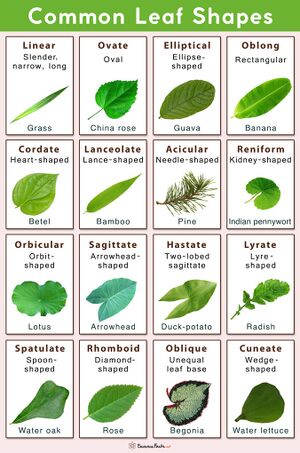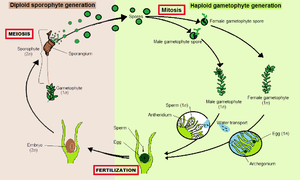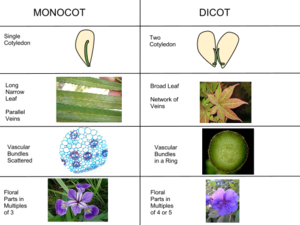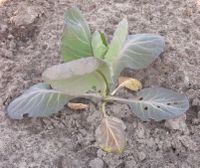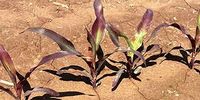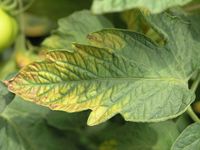Botany
This page is incomplete. |
| Botany | ||||||
|---|---|---|---|---|---|---|
| Type | Life Science | |||||
| Category | Study | |||||
| Latest Appearance | 2023 | |||||
| Forum Threads | ||||||
| ||||||
| Question Marathon Threads | ||||||
| ||||||
Botany is a Division B and Division C event that was first run as a trial event in 2020 at New Jersey regional tournaments. It was also scheduled to be run at the 2020 Virginia and Hawaii state tournaments, but these tournaments were cancelled due to the 2019-20 Coronavirus outbreak. The event is run as an exam, focusing on plant biology and horticulture. Each participant may bring one 8.5" x 11" note sheet with information on both sides, as well as one stand-alone non-programmable, non-graphing calculator.
Plant Anatomy and Morphology
Vascular Plants
The morphology of vascular plants have two key parts:
- Shoot system (what sprouts above ground, which are the stem and leaves).
- Root system (what grows underground).
Both systems depend on each other to function, as the shoot system needs the root system for water and minerals and the root system needs the shoot system for food and energy. If a plant loses one of the systems, it can regrow.
Among the many tissues and organs, vascular plants have 4 main organ systems: the stem, the roots, the leaves, and the reproductive organs. The stem holds the leaves and connects them to the roots through two tissues called the xylem and phloem. The roots hold the plant in place and absorb water and nutrients from the ground. The leaves grow from the stem and their purpose is to photosynthesize. The shape and structure of a leaf depends on the plant itself. The reproductive organs allow the plant to multiply in number, both asexually and sexually depending on the plant.
Reproduction
Plant reproduction is very different from animal reproduction. Unlike animals, plants use a system called alternation of generations, where each species has 2 forms, the sporophyte and the gametophyte. These 2 forms can be identical (isomorphic), like in certain algal species, or different (heteromorphic), like in angiosperms. In alternation of generations, the sporophyte is the diploid stage, meaning that it has 2 sets of chromosomes, and the gametophyte is the haploid stage, meaning that it has only one set of chromosomes. In most nonvascular plants, the gametophyte is dominant, and the sporophyte is dependent on the gametophyte for nourishment. In seed plants, the opposite is true, the sporophyte is dominant, and the gametophytes are reduced in size. In most angiosperms, the gametophytes are reduced to only a few cells.
In general, the sporophyte produces structures called sporangia, that produce spores. Spores are haploid cells that develop into gametophytes. The gametophytes produce gametangia, which are structures that produce gametes. There are 2 types of gametangia: archegonia and antheridia. Archegonia produce and contain the female gametes, while antheridia produce and contain male gametes. Antheridia and archegonia are not always found in plants; some, such as angiosperms, do not have either. 2 gametes fuse to create a zygote, which then develops into a mature sporophyte.
Homosporous spore production
Homosporous organisms are organisms that produce only one kind of spore. The spores that they produce develop into gametophytes that are hermaphroditic (both male and female).
Heterosporous spore production
Heterosporous organisms are organisms that produce 2 types of spores, megaspores and microspores. They are produced in megasporangia and microsporangia, and develop into megagametophytes and microgametophytes respectively. The megaspore is the larger of the 2 spores and is the female spore, and the microspore is smaller and is the male spore. Heterospory is commonly found in seed plants such as pines.
Non-vascular Plants
- Moss: Bryophytes
- Dispersal- Spores are dispersed into favorable environments such as moist soil or tree bark, where they may germinate and grow into haploid gametophytes (gamete-producing plant structure).
- Protonemata- Promising spores develop a mass of green, branched, one-cell-thick filaments called protonemata. Protonemata have large surface areas that enhance water and mineral absorption to continue germination. Haploid. Note that the developing gametophytes are anchored by rhizoids, not roots.
- Budding- Buds are plant structures that give rise to gametophytes. These are produced by the haploid protonemata through mitotic division.
- Male gametophyte- Contains inner structures known as gametangia, more specifically, antheridia, where sperms are produced and kept.
- Female gametophyte- Contains inner structures known as gametangia, more specifically, archegonia, where eggs are produced and kept.
- Fertilization- Upon favorable conditions, the flagellated sperm swim through a film of water toward eggs (produced by female gametangia).
- Zygotic Stage- A diploid zygote develops inside of the archegonium and develops into a sporophyte embryo.
- Sporophytic Stage- A young diploid sporophyte grows a long stalk (seta), again from the nutrient-dependent archegonium.
- Maturity- Looking at the entire plant, the mature sporophyte is on top (seta + capsule), and attached by the foot of the female gametophyte.
- Repetition- Meiosis occurs inside of the capsule (sporangium) where haploid spores develop. Upon capsule maturity, the lid pops off, and the spores are released to repeat the preceding steps.
Seedless Vascular Plants
- Ferns: Pterophytes
- Dispersal- Sporangia release haploid spores. Most fern species produce a single type of spore (botanical condition known as isospory or homospory) that develops into a bisexual photosynthetic gametophyte.
- Protonemata- Same function as in moss life cycle.
- Bisexual gametophyte- Antheridia and archegonia are produced but in different regions of of the mature haploid gametophyte. Do note that there is a reason why in most fern species, a gametophyte produces sperm and eggs at different times.
- Fertilization- Same as in the moss life cycle.
- Sporophytic Stage- Unlike bryophytes, these grow true leaves out from an archegonium gametophyte.
- Mature Sporophytic stage- Sori are found on the underside of the sporophyte's reproductive leaves. Each sorus is a cluster of sporangia.
- Repetition- Same as in the moss life cycle.
Vascular Plants
- Gymnosperms- Pines
- Microsporocytes and Megasporocytes - Microsporocytes and megasporocytes are found on cones called strobili and are the precursors to microspores and megaspores, respectively. Many conifers have strobili with microspores on the lower branches of the tree, and the strobili with megaspores on the higher branches to increase the probability of getting pollinated by other trees, since pollen grains generally don't fly straight up.
- Meiosis - The microsporocytes divide by meiosis to form a pollen grain made of 4 cells: 2 prothallial cells, a generative cell, and a tube cell. The megasporocyte divides to form 4 megaspores. 3 of the spores are destroyed, leaving only 1 megaspore.
- Pollination - The pollen grains are transported to the megasporangiate strobili (usually by wind) and germinate to form pollen tubes. The tube slowly grows toward the megagametophyte (germinated megaspore).
- Fertilization - About a year after pollination, the generative cell divides to form a sterile cell and a spermatogenous cell. This spermatogenous cell divides to form 2 sperm and the microgametophyte is now mature. After about 15 months, the pollen tube reaches the megagametophyte, and 1 sperm cell fertilizes the egg and the other is destroyed.
- Dispersal - Seeds are released and are usually distributed by the wind.
- Germination - Seeds germinate to form sporophyte seedlings.
- Repetition - The seedling grows into a mature sporophyte and produce strobili.
- Angiosperms- Flowers
- Microsporogenesis and Megasporogenesis - Microsporogenesis: Inside the anther, microsporocytes are formed. These divide meiotically to form 4 haploid microspores. Megasporogenesis: Inside the ovule, a single diploid megasporocyte is produced. It then undergoes meiosis to form 4 haploid megaspores, which are usually in a line of 4 cells. 3 of the megaspores usually degenerate, and the only one left is usually the cell farthest from the micropyle.
- Microgametogenesis and Megagametogenesis - Microgametogenesis: The microspore divides mitotically to form a vegetative cell (also called the tube cell) and a generative cell. In most angiosperms, this two-celled stage is when the microgametophyte is released from the anther. In the other angiosperms, the generative cell nucleus divides before release into 2 sperm cells, forming the three-celled stage. 'Megagametogenesis: The megaspore nucleus divides 3 times to form 8 nuclei. These form 2 groups of 4, one on the micropylar end and one on the chalazal (opposite) end. 1 nucleus from each group goes to the center of the cell and are called the polar nuclei. The 3 remaining nuclei at the micropylar end form the egg apparatus, an egg cell and 2 synergids. The 3 nuclei at the chalazal end form the antipodals. The cell containing the polar nuclei is called the central cell. These 7 cells (2 synergids, an egg cell, 3 antipodals, and a central cell) and 8 nuclei form the mature megagametophyte, known as the embryo sac.
- Pollination - Anthers are opened to release pollen grains. The pollen grains are transported to the stigma by a variety of ways, such as by wind or insects. If the generative cell of the pollen grain has not already divided, it does, forming the mature microgametophyte. The pollen grain forms a pollen tube and starts growing.
- Double Fertilization - The pollen tube grows to the ovary and reaches an ovule. The tube releases its contents into a synergid. Unlike gymnosperms, both sperm cells are used in double fertilization, a process unique to angiosperms. One sperm cell is used to fertilize the egg nucleus, while the other fertilizes the polar nuclei. The fusion of the 2 polar nuclei and the sperm cell form a triploid (containing 3 sets of chromosomes) nucleus called the primary endosperm nucleus.
- Fruit Formation - The primary endosperm nucleus divides to form the endosperm, and the fertilized egg forms the embryo. The ovary wall and related parts expand to form the fruit. The pericarp (ovary wall) expands to form 3 layers, the exocarp, the mesocarp, and the endocarp.
- Dispersal - Seeds are dispersed through a variety of methods.
- Germination - The seed germinates to form a sporophyte
- Repetition - The mature sporophyte flowers, causing microsporogenesis and megasporogenesis.
Evolution and Paleo-Botany
- Evolutionary Advantage of Seeds
Major Plant Groups
Algae vs. Multicellular Plants
Algae are usually unicellular and Multicellular plants consist of many cells. Algae can either be unicellular and multicellular while plants are multicellular organisms. Algae typically live underwater while plants thrive on land. Algae are nonvascular. They don’t have structures such as connective tissues, leaves, stems and roots unlike plants.
Monocots vs. Dicots
If an organism reproduces via enclosed seeds, it is either a monocot or a dicot. The terms "monocot" and "dicot" refer to the number of cotyledons present in the seed. A monocot (monocotyledon) has only one cotyledon, and dicots (dicotyledon) have two. Monocots and dicots are also differentiated by their leaf venation (leaf vein structure), stem structure, root systems, and floral patterns.
Leaf venation
- Monocots have parallel leaf veins.
- Dicots have branching leaf veins.
Stem structure
- Monocots develop vascular bundles in groups that are placed arbitrarily around the stem.
- Dicots develop vascular bundles in groups that form a ring around the edge of the stem.
Root systems
- Monocots usually grow with a fibrous root system, meaning that there are many small roots that branch out from each other.
- Dicots usually grow a taproot, which is a deep and thick central root in which smaller roots branch out from.
Floral patterns
- Monocots usually flower in groups of 3
- Dicots usually flower in groups of 5
Embryophytes vs. Cryptograms
Embryophytes and Cryptogams are 2 large groups of plants. The term "plant" is a very general term in many ways and is used commonly to describe most organisms that aren't animals. Embryophytes are a clade of plants commonly associated with land plants, like trees, mosses, and flowering plants, while Cryptogams are a group that includes plants that reproduce with spores, such as fungi, algae, and mosses.
Embryophytes are classified by their ability to nurture the young sporophyte inside the tissue of the gametophyte. This includes groups such as nonvascular plants (mosses, liverworts, and hornworts), seedless vascular plants (such as ferns and lycophytes), gymnosperms (like coniferous trees and cycads), and angiosperms (flowering plants).
In contrast, Cryptograms are organisms that reproduce without seeds or flowers, with the use of spores. This includes groups such as thallophytes (such as fungi, bacteria, and algae), bryophytes (nonvascular plants), pteridophytes (seedless vascular plants).
Woody Plants vs. Herbaceous Plants
Herbaceous plants and woody plants are 2 different groups of land plants. The main difference between the two groups is that woody plants are generally perennials which undergo secondary growth and have a woody stem. In contrast, herbaceous plants are generally shorter lived, and do not have a woody stem.
Herbaceous plants, or herbs, are mainly classified by not having a permanent woody stem. A herbaceous plant body is produced almost entirely by primary, or lengthwise, growth, with very little or no secondary growth occurring. Herbaceous plants can be annuals, meaning that it takes one year to complete its life cycle, biennials, meaning that it takes 2 years to complete its life cycle, or perennials, which live for more than 2 years. Annual herbs die after one year, while in other herbs, the stem dies every year, and the plant is left with just a small portion under the ground. After the cold or dry season ends, this portion regrows. They usually don’t produce above-ground structures made of lignin, an important polymer in cell walls, meaning that they can colonize the land much faster than woody plants. Due to this, some herbs, usually fast-growing annuals, are pioneer species in succession.
Woody plants produce wood and have sturdy stems. Since they need time to produce their stems, woody plants are almost always perennials. Unlike herbaceous plants, they survive during the winter in a dormant state where primary growth (lengthwise growth) is slowed or stopped and don’t need to regrow every year. During the cold or dry season, stem growth completely ceases and the plant stops growing. Most woody plants are trees or shrubs that are perennials. Many woody plants will remove branches or leaves that are no longer serving their purpose, in a process called self-pruning. In woody plants, the root is also woody and fortified with lignin. At the end of the growing season, new roots stop primary growth. However, they continue to undergo secondary growth, or growth that increases the diameter. Unlike the stem, roots continue to grow very slowly during the dormant season.
Division C Concepts
Plant Diseases
Nutrient Deficiencies
Plants need a variety of nutrients to survive. When the plant is running low on these nutrients, there are telltale signs that to look for to determine what’s wrong. Some of the most important nutrients to plant growth are nitrogen, phosphorus, and potassium. On fertilizers, you often see the N-P-K ratio of the fertilizer, the concentration of nitrogen, phosphorus, and potassium. There are 2 types of nutrients: mobile and immobile nutrients. Mobile nutrients are able to move through the plant from the younger leaves to the older leaves when needed. This makes most of the early symptoms of theses deficiencies occur in the older leaves. Examples of mobile nutrients include nitrogen, magnesium, and molybdenum. Immobile nutrients are not able to move through the plant, and therefore occur first in the younger leaves. Example of immobile nutrients are calcium, boron, and iron. Zinc is a notable exception, since it can move short distances. Therefore, zinc deficiencies show symptoms in the middle leaves of the plant.
Nutrients can be classified in another way into 2 new (and more important) categories: Macronutrients and Micronutrients
Macronutrients are nutrients that plants need a large amount of to survive.
| Nutrient | Uses | Deficiency Symptoms | Picture |
|---|---|---|---|
| Nitrogen | Nitrogen is one of, if not the most important element to a plant’s growth. It is used in many important organic molecules, such as nucleic acids, proteins, amino acids, and chlorophyll. | Loss of coloration (chlorosis) in mature leaves and the death of many or all cells in a tissue (necrosis) The leaves also start to turn yellow, and the stem of the plant usually turns to a light green color. | |
| Phosphorus | Phosphorus is another very important plant nutrient, used in organic molecules such as nucleic acids and ATP. | Leaf tips with reddish-purple “flames” coming from the tips and older leaves turning dark green or reddish purple. | |
| Potassium | Potassium is used in plants to activate enzymes and in photosynthesis. | Signs of a deficiency include older leaves wilting and looking scorched. The leaves also start yellowing on the sides and go along the edge of the leaf, leaving the interior untouched. | |
| Calcium | Calcium is used in the construction and material of the cell wall. | New leaves growing shriveled and darken. The tips of leaves will also often become brittle and eventually die. | |
| Magnesium | Magnesium is an important plant nutrient, since it is used as the center molecule in chlorophyll and an important molecule in ATP synthesis. | Symptoms of a magnesium deficiency include older leaves yellowing at the edge, leaving the center of the leaf green. | |
| Sulfur | Sulfur is an important plant nutrient used in the amino acids cysteine and methionine. | Yellowing of young leaves, and eventually yellowing of older leaves. |
Micronutrients are elements in plant tissue in very small quantities, measured in ppm (parts per million), but are still essential for plant growth.
| Nutrient | Uses | Deficiency Symptoms | Picture |
|---|---|---|---|
| Boron | Boron is a plant nutrient used in cell wall formation and reproductive tissue. | Death of the terminal (or apical) bud, the primary point of growth in plants. Young leaves may also show chlorosis, and other leaves may develop dark brown spots that progress to the death of that tissue. | |
| Copper | Copper is a nutrient needed for chlorophyll production and respiration. | Leaves darkening, growth stopping, delayed maturity, and brown discoloration (melanosis). | |
| Iron | Iron is an important nutrient used in plant respiratory and photosynthetic reactions. | Chlorosis between the veins of the plants, sharply defined veins, and eventually chlorosis of the whole leaf. | |
| Manganese | Manganese is a plant nutrient important for the chloroplast. | Yellowing of the leaves between veins, dead spots on the leaves, smaller plant parts, and fronds having slowed or stopped growth (called frizzle top). | |
| Molybdenum | Molybdenum is needed for enzyme activation and nitrogen fixation in some plants. | Similar symptoms to a nitrogen deficiency (chlorosis and necrosis) | |
| Zinc | Zinc is a plant nutrient used in the production of plant growth factors (or plant hormones). | Yellowing of leaves between veins and severe chlorosis and the paling of leaves. |
Resources
- Science Olympiad Trial Event Rules
- 2020-2021 UT Invitational Botany Examination: https://scioly.org/forums/viewtopic.php?f=294&p=429503#p429503


